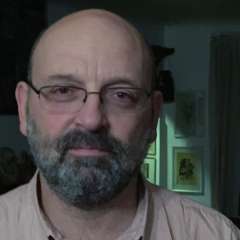Making her Carnegie Hall recital debut a year ago, the Italian pianist Beatrice Rana underlined threads linking Chopin’s Scherzi to Debussy’s first book of Études to Stravinsky’s Three Movements from Petrouchka. On Thursday night she bookended a landmark in the development of Debussy’s style with one of Bach’s French Suites and Beethoven’s formidable "Hammerklavier" Sonata, thus continuing to shed a very personal light on the threads and knots of the musical history tapestry.
With wonderful timbral and dynamic contrasts, Bach’s French Suite no. 2 in C minor had an almost Chopinesque quality. Even when surprised by some of Rana’s interpretative decisions – the too-subdued left hand in the Allemande, the too-powerful first bars of the Courante – one had to marvel at the intricacies of a well-conceived interpretative vision, so full of color that even the most hardened detractors of playing Bach on a modern piano would have second thoughts. Among the seven segments, the Courante was fiery, the following Sarabande was meditative. An elegant Air was the avenue for a restrained dialogue between hands, while the Gigue was rustic, with humorous hints. Sometimes images of the original dances floated in front of your eyes, sometimes they were very remote. There was no trace of aridity.
Rana’s astounding abilities to control every sound or accent, to shape pensive or whirlwind-like phrases were evident in her take of Debussy’s Pour le piano. Virtuosity was constantly subsumed into musicality and expressiveness. From the semiquavers in the initial bars sounding a tad lugubrious to the evocation of the gamelan, from rapid chords to glissandi, the Prélude’s vitality was palpable but never overemphasized. Late-Lisztian connotations were somewhere in the background. In the second movement, the perception of the original dance, still clear in Bach’s version of the Sarabande, was reduced to a bare hint. The sense of shifting between hazy and strangely shimmering patches was conveyed by the most refined changes in touch. Finally, the Toccata was all about surprising chromatic shifts and equivocal tonality.
After the interval, rendering Beethoven’s Piano Sonata no. 29 in B flat major was not at all about “conquering” its tremendous technical challenges, but about bringing forward the visionary character of the music. It was not an effervescent traversal of the score, but an intellectually probing one that did not skim over moments of self-questioning, bewilderment or wit. The same refined control of touch evident in the Sarabande of Pour le piano was employed in the cross-rhythmic phrases of the Trio and in shaping the Adagio sostenuto’s expansive lines with their many harmonic modulations. The sense of wholeness was never in doubt with the proto-Schubertian swings between profound sadness, hope and acceptance handled with great naturalness and restraint. Underlining a continuity between the third movement and the Finale, Rana drew special contours around the latter’s Largo and lyrical D major sections. The technical demands were no match for the pianist’s dexterity, allowing her to focus on the contrapuntal complexities and clashing sonorities of a fugue like no other, gradually increasing the level of tension.
The "Hammerklavier" Sonata is one of those scores whose reverberations in the listeners’ minds should not be perturbed by any encore. Nevertheless, Rana offered two: a mellifluous Le Cygne by Saint-Saëns (arranged by Leopold Godowsky) and a fluttering Étude (“Pour les huits doigts”) by Debussy, one of the composers she seems to be the closest to, at least at this stage of her young career.




